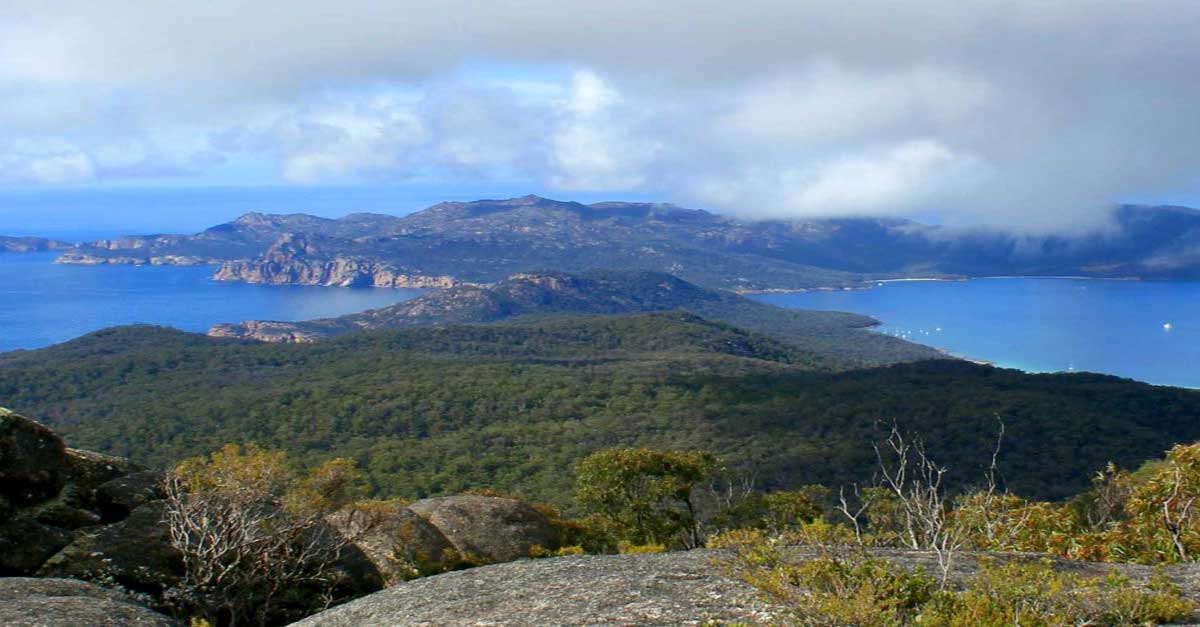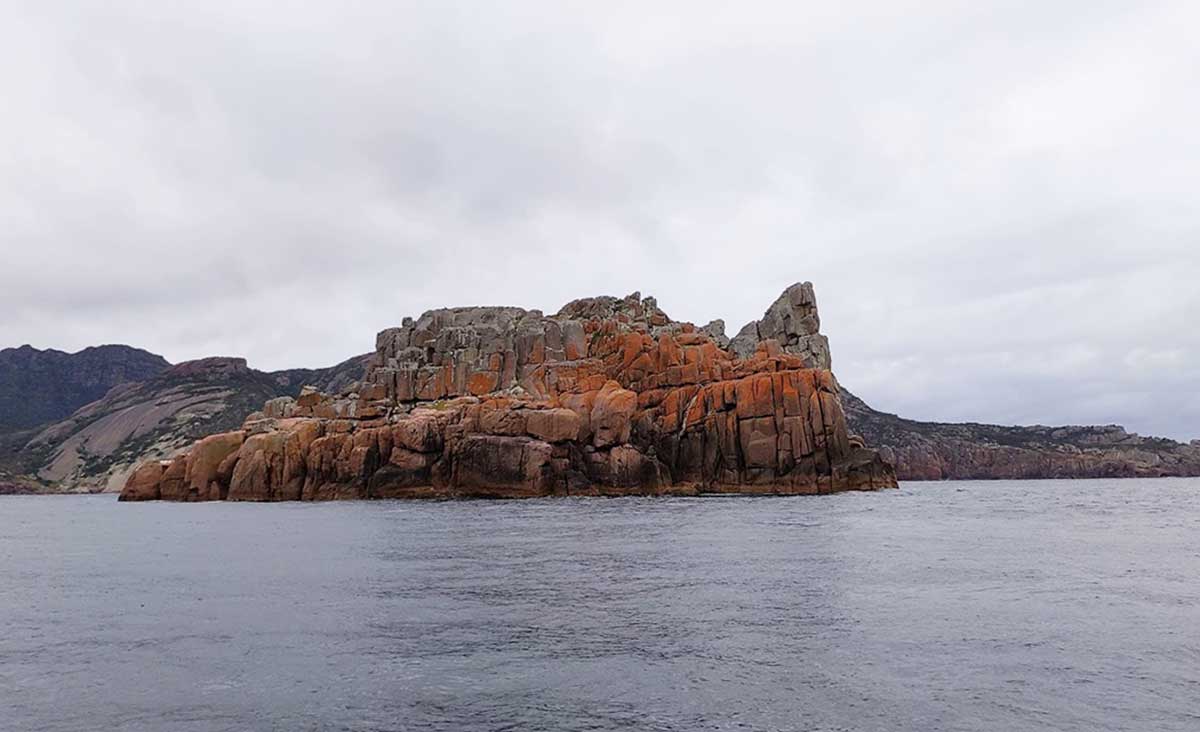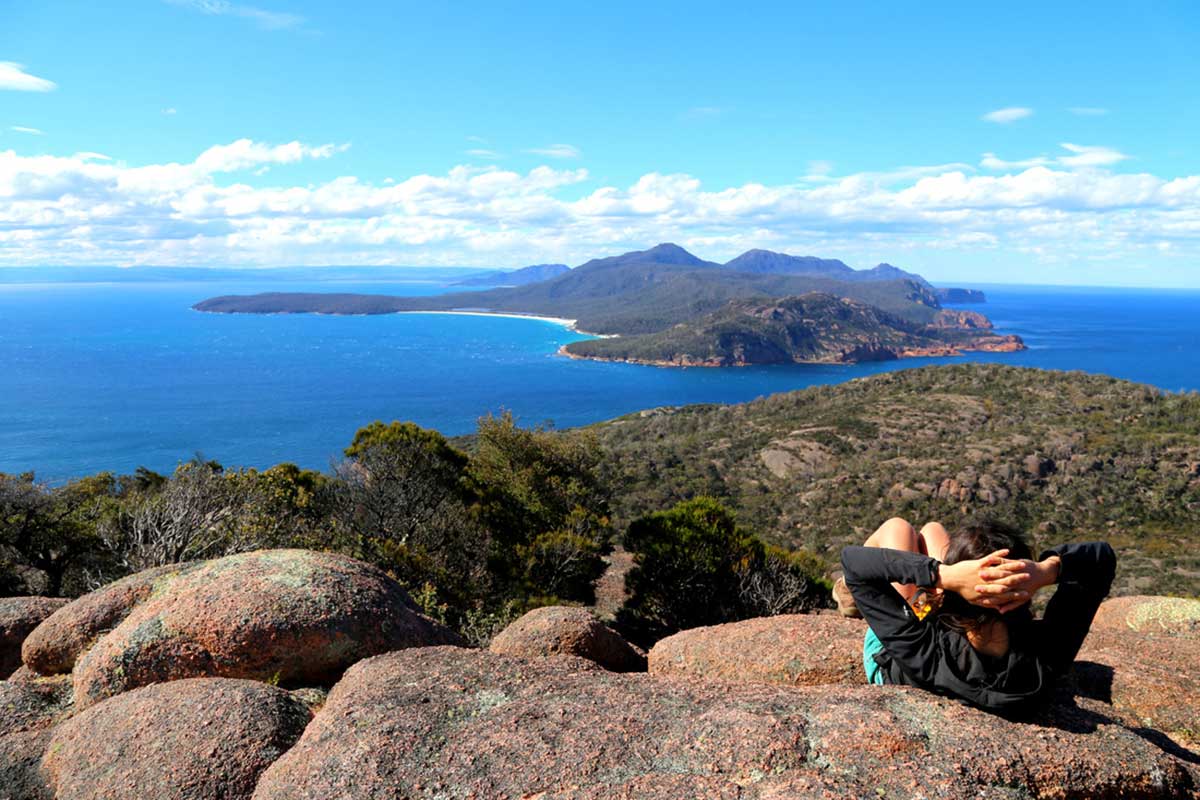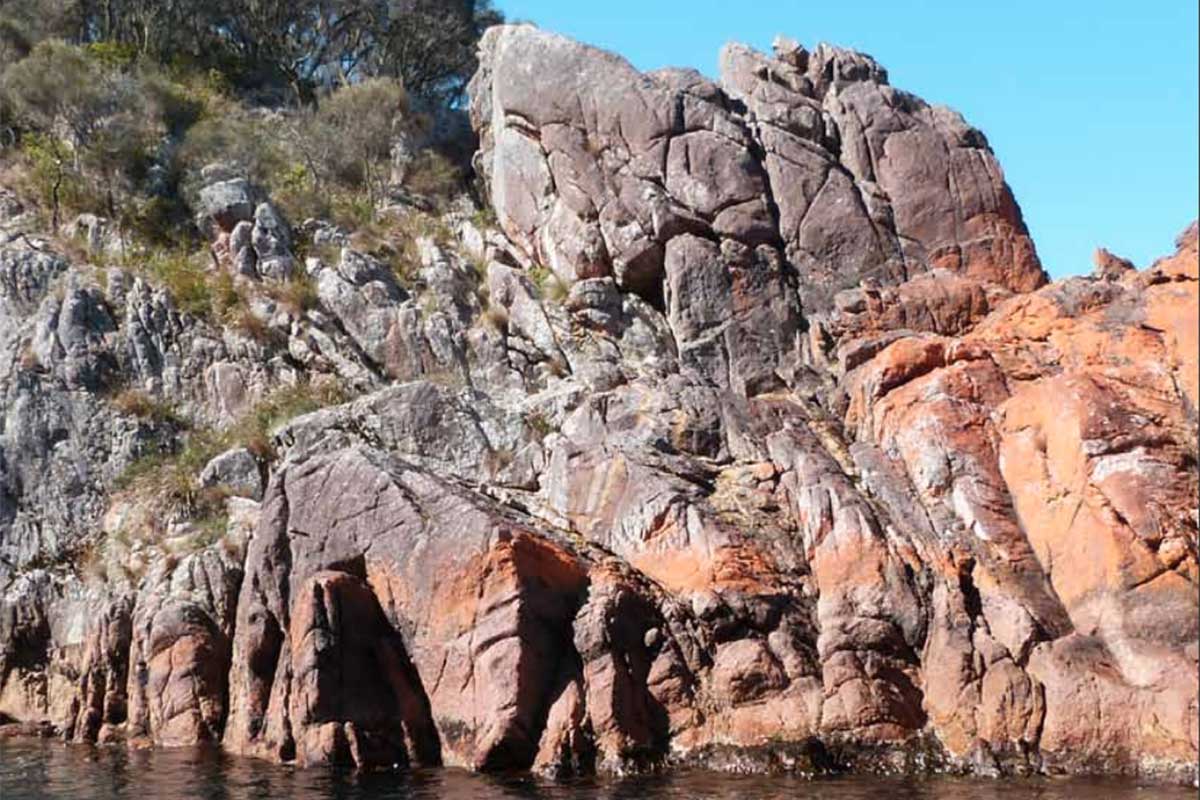Schouten Island, Tasmania

Situated just 1.6 kilometres south of Freycinet Peninsula, Schouten Island is an isolated paradise which is fantastic for snorkelling, canoeing and camping. Part of Freycinet National Park, the island is approximately 6 kilometres wide by 7 kilometres long and is bounded by a picturesque coastline of small sandy beaches and rocky granite bays.
Though the island is popular with campers and kayakers, there is no settlement and no ferry service, which adds to the feeling of remoteness and being in a place where it is just you and nature. Walking tracks give access to the many parts of the island. There are huts near a caretakers' residence at Moreys Bay. Camping is permitted at nearby Crocketts Bay. Tours visit the island's shore, and boats can be chartered from Coles Bay to gain access. The island is a 30-minute boat trip from the township of Coles Bay.

Crocketts Bay, Schouten Island
Schouten is a rugged island with the highest point, Mount Storey (400 metres). Mt. Daedalus is the summit peak of a substantial granite area on the island and small tin workings can be seen in the vicinity. The island is surrounded by cliffs, broken by sheltered bays. A north-south fault line divides the island where the eastern part of the island is composed of granite while the western part is dolerite overlying sedimentary and supergroup rocks.

The natural vegetation of the island is dominated by eucalypt forest on the dolerite soils in the west, and by scrubland, heathland and sedgeland communities on the granitic soils of the east. Areas associated with previous human disturbance, such as clearing, grazing and frequent burning, are dominated by grasses and herbs.
Little Penguins and Short-tailed Shearwaters breed on the island, along with other bird species such as the Tasmanian Native-hen. Australian Fur Seals haul out on the eastern side. Reptiles present include the Tasmanian Tree Skink, She-oak Skink, Southern Grass Skink and Three-lined Skink

Taillefer Rocks
Taillefer Rocks
The Taillefer Rocks, part of the Schouten Island Group, are three small, rugged, granite islands, with a combined area of approximately 15 hectares (37 acres) lying within the Freycinet National Park. This is one of the few islands where Oyster Bay pines occur. Recorded breeding seabird species are little penguin, short-tailed shearwater, fairy prion and common diving petrel. Reptiles present include the metallic skink, White's skink, spotted skink and mountain dragon. Australian fur seals haul-out there in small numbers. Taillefer Rocks were named on 28.2.1802 by a French expedition led by Nicolas Baudin. The name recalls Hubert Jules Taillefer, the second doctor on the corvette, Le Géographe, one of the expedition's ships.

Freycinet Peninsula from Bear Hill, Schouten Island
Brief History
Schouten Island is one of Tasmania's first geographical features to be named by an European and is therefore one of the oldest names still in use today. On navigating the east coast of Tasmania in December 1642, Dutch explorer Abel Tasman named Schouten Island (it appeared as Schouten's Isle on an 1846 map) after Joost Schouten, a member of the Council of the Dutch East India Company, who was the first Dutch commander to round Cape Horn, in 1610.
The adjacent peninsula was initially thought to consist of a chain of islands, but this myth was dispelled during the visit of Nicholas Baudin, the French explorer, in 1802-03: "High granitic mountains whose summits are almost completely barren, form the whole eastern coast of this part of Van Diemen's Land. They rise sheer from the base. The country which adjoins them is extremely low and cannot be seen unless viewed from only a little distance at sea. It is to this strange formation that we must doubtless attribute the errors of the navigators who had preceded us into these waters and who had mistaken these high mountains for as many separate island." The brothers Freycinet were senior officers on Baudin's expedition, although it is unclear which one the peninsula was named after.

Members of the Baudin expedition landed on Schouten in 1802. In the early 19th century, sealers were active in the area and are known to have visited the island. The discovery of coal on the island in 1809 by a sealer, John Stacey led to several phases of coal and tin mining, where in 1880 a small number of Chinese men worked the ground for tin. Stacey found that 200-300 hectares of land could be suitable for cultivation. Plans to use convict labour to mine coal on the island in the 1840s were never realised.
Sheep and cattle grazing was being carried out on parts of the Freycinet Peninsula as early as the 1850s. Farming leases were also taken out on Schouten Island until the 1960s. Huts at Moreys Beach, an old sheep dip and abandoned farming machinery are testament to the island's pastoral history. Many sheep grazing leases continued until their expiry in 1969, when they were not renewed. Schouten Island, which had been administered as a scenic reserve from 1916 to 1941, and then again from 1967, was added to Freycinet National Park in 1977.
About Justus Schouten
Schouten Island was named n December 1642 by Dutch explorer Abel Taman after Justus Schouten, councillor of Dutch East India Company. In the seventeenth century, the Dutch East Indies Company arose as the Netherlands established and then expanded a mercantile and colonial empire in what is now Indonesia. Schouten played a major role inb thius expansion. Schouten was born in the Netherlands and emigrated to the Dutch East Indies in 1622. Over the next two decades, Schouten established a formidable reputation in colonial trade and diplomacy. He became involved in manufacturing and trade within a Siamese Dutch East Indies Company factory enclave in Ayutthaya in 1624 and shortly thereafter became secretary to Willem Janssen on the latter's exploratory trade and reconnaissance visit to Japan in 1625. He became involved in manufacturing and trade work in a Dutch factory enclave in Attahaya, Siam (Thailand) and became a secretary to Dutch diplomat and envoy Willem Janssen as the latter embarked on a trade and reconnaissance visit to Japan in 1624. Back in Siam in 1633, he provided assistance to the King of Siam in diplomatic negotiations in that year, enabling further trade concessions and expansion of factory space as a result of its success.
By 1640, he had returned to Batavia and served on the Council of the Indies for elite mercantile and commercial interests within the Dutch East Indies Company. In 1642, he equipped Abel Tasman for his expedition to the Southwest Pacific, which was to circumnavigate Australia and lead to the European discovery of New Zealand. It was on that voyage that Tasman ighted and named Schouten Island after him.
During the time of their colonial expansion, the Netherlands were still under conservative Calvinist control, which meant that 'sodomy' (any non-procreative sexual activity, which meant gay sex in this instance) was illegal and subject to capital punishment. After the Dutch East Indies Company was established in 1602, Dutch mercantile and colonial activity grew apace in what is today Indonesia. The colonists and merchants were mostly male, as it proved difficult for other than previously married women to settle on the colonial frontier of the time. This meant cross-cultural marriages were frequent, as well as occassional enterprising Dutch sex workers. The Dutch East Indies Company also proved a sanctuary for gay men fleeing Dutch homeland persecution, as long as they remained discrete, given the considerable attractions of this male-only environment.
Despite his services to his country, and his high standing as a successful merchant and administrator, Schouten's world fell apart in July 1644, after a disgruntled male shipmate accused Schouten of sodomy, a crime punishable by water or fire. He confessed to the crimes and offered no defence. After being tried and convicted of consensual gay sex, his sentence was mitigated in light of his distinguished record. The colony's Governor-General, Anthony van Diemen - after whom Tasmania was originally named - ordered that he be strangled before being burnt at the stake. At least three of his male sexual partners were subsequently tied in sacks and drowned.
